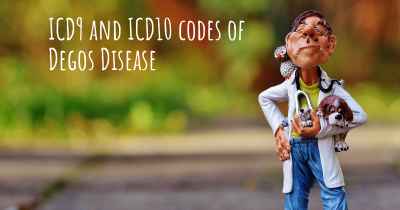What is the history of Degos Disease?
When was Degos Disease discovered? What is the story of this discovery? Was it coincidence or not?

Degos disease, also known as malignant atrophic papulosis, is a rare and progressive disorder that primarily affects the blood vessels. It was first described by French dermatologist Robert Degos in 1941. Degos disease is characterized by the development of small, porcelain-white papules on the skin, which can progress to form characteristic atrophic scars. These skin lesions are often accompanied by involvement of internal organs, particularly the gastrointestinal tract and central nervous system.
The exact cause of Degos disease remains unknown, and it is considered an idiopathic condition. However, several theories have been proposed regarding its pathogenesis. One hypothesis suggests that it may be an autoimmune disorder, where the body's immune system mistakenly attacks its own blood vessels. Another theory suggests that it may be a thrombotic disorder, characterized by the formation of blood clots within the vessels. However, none of these theories have been definitively proven.
Degos disease primarily affects adults, with a slight male predominance. It is an extremely rare condition, with only a few hundred cases reported worldwide. The disease typically presents in the third or fourth decade of life, although cases have been reported in children as well.
The clinical presentation of Degos disease can vary widely among individuals. The initial skin lesions are usually small, painless, and appear as white or pink papules. These papules may be slightly raised and have a characteristic central depression, giving them a "doughnut-like" appearance. Over time, the papules may progress to form atrophic scars, which are depressed areas of skin with a porcelain-white appearance. The skin lesions are typically found on the trunk, buttocks, and extremities.
In addition to skin involvement, Degos disease can also affect various internal organs. The gastrointestinal tract is the most commonly involved organ, with symptoms such as abdominal pain, nausea, vomiting, and diarrhea. In some cases, the disease can lead to bowel perforation, which is a life-threatening complication. Involvement of the central nervous system can cause neurological symptoms, including headaches, seizures, and cognitive impairment. Other organs that may be affected include the heart, lungs, kidneys, and liver.
The diagnosis of Degos disease can be challenging due to its rarity and variable presentation. It is often a diagnosis of exclusion, meaning that other conditions with similar symptoms must be ruled out. Skin biopsies are commonly performed to examine the characteristic histopathological findings, which include thrombotic occlusion of small blood vessels in the dermis and subcutaneous tissue. Additional tests, such as imaging studies and laboratory tests, may be done to assess the involvement of internal organs.
Unfortunately, there is currently no specific treatment for Degos disease, and management primarily focuses on symptomatic relief and preventing complications. Immunosuppressive therapies, such as corticosteroids and immunomodulatory drugs, have been used with varying success. Anticoagulant medications, such as aspirin and heparin, may be prescribed to prevent blood clot formation. Surgical interventions may be necessary in cases of bowel perforation or other complications.
The prognosis of Degos disease is highly variable and unpredictable. The disease can progress slowly over many years or have a more rapid and aggressive course. The severity of organ involvement is a major determinant of prognosis, with gastrointestinal and central nervous system involvement associated with a poorer outcome. Unfortunately, the mortality rate of Degos disease is high, primarily due to complications related to bowel perforation and central nervous system involvement.
In conclusion, Degos disease is a rare and progressive disorder that primarily affects the blood vessels. It is characterized by the development of porcelain-white skin papules and can involve various internal organs. The exact cause of the disease remains unknown, and there is currently no specific treatment. Early diagnosis and management of complications are crucial in improving outcomes for individuals with Degos disease.








